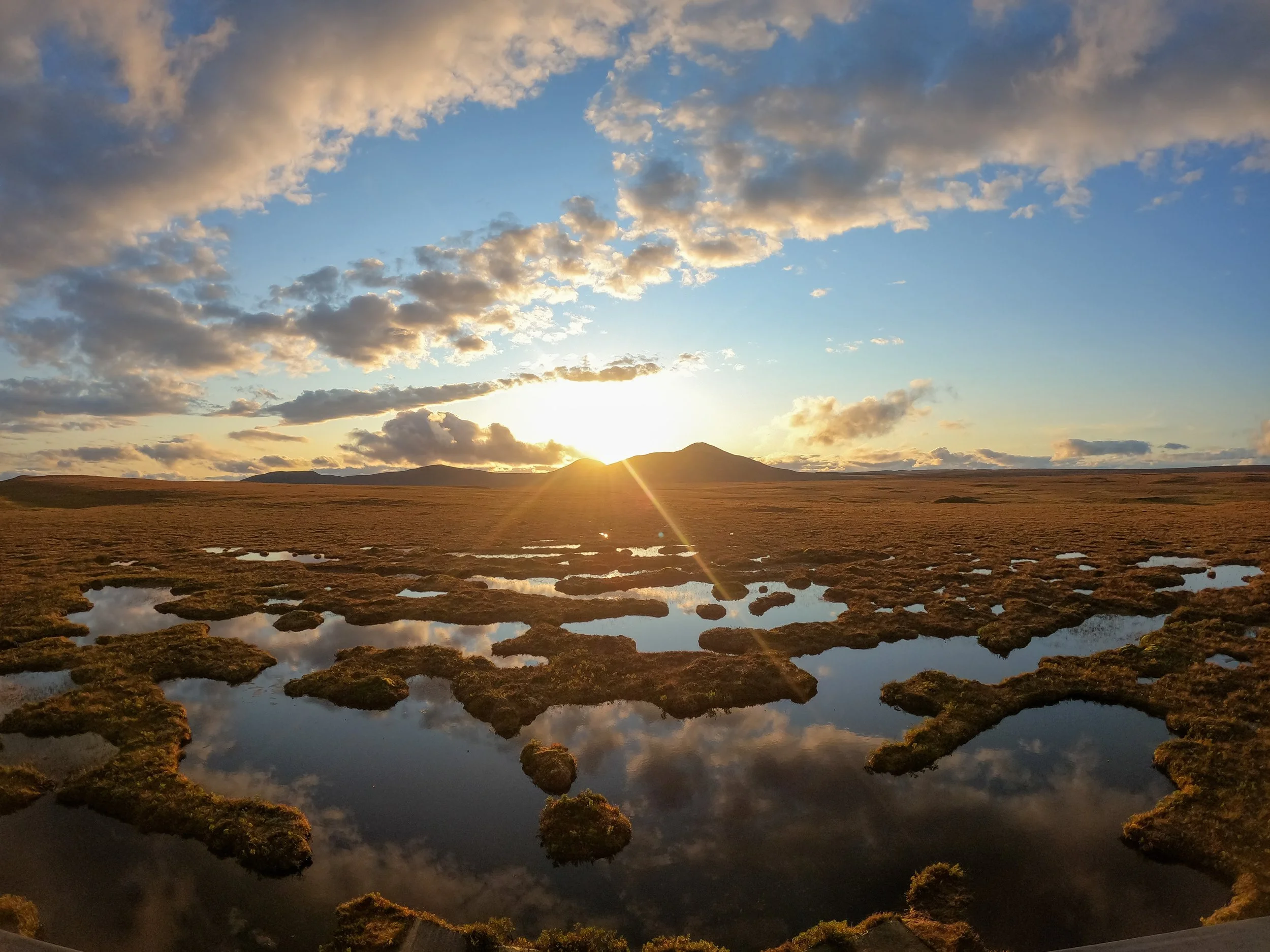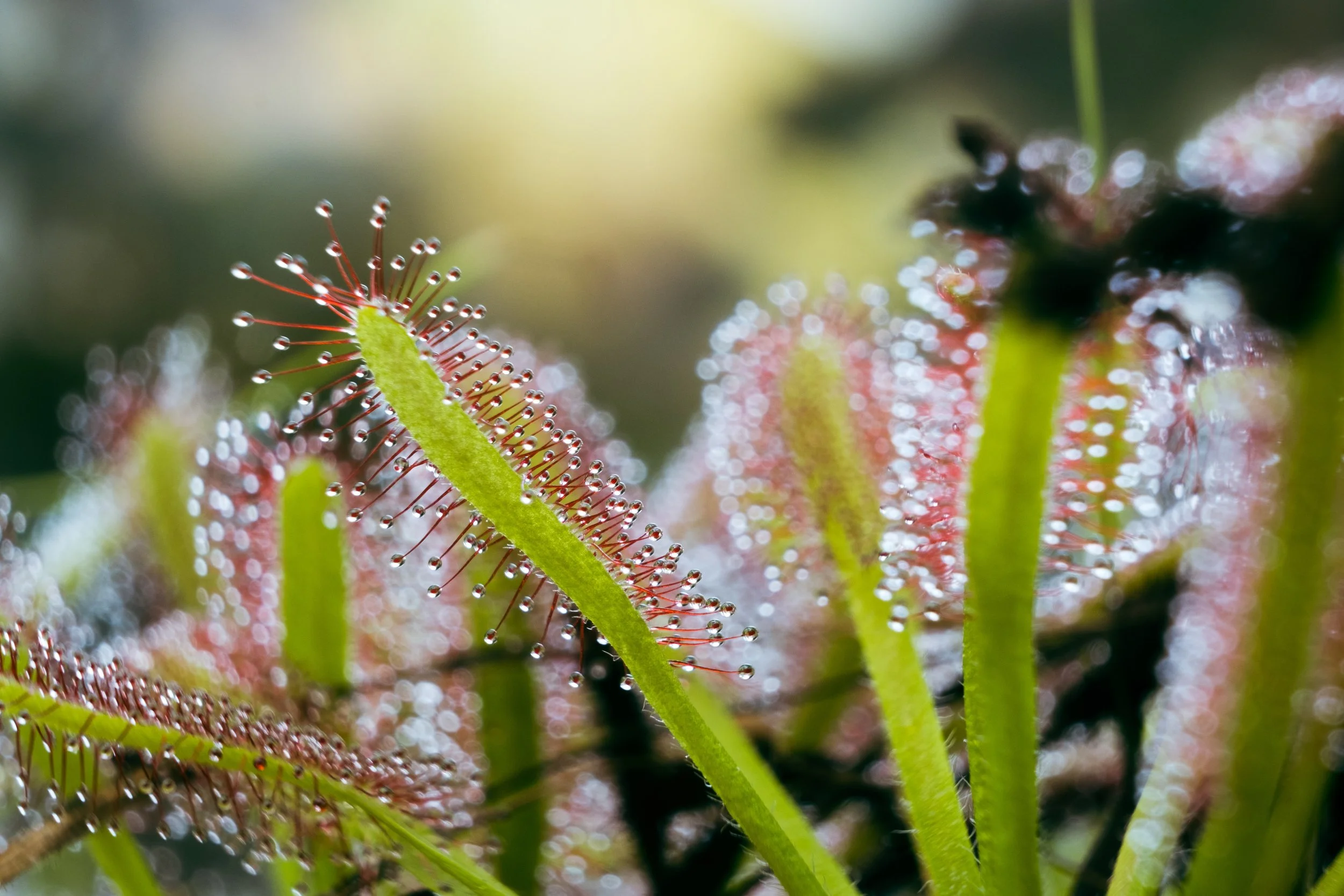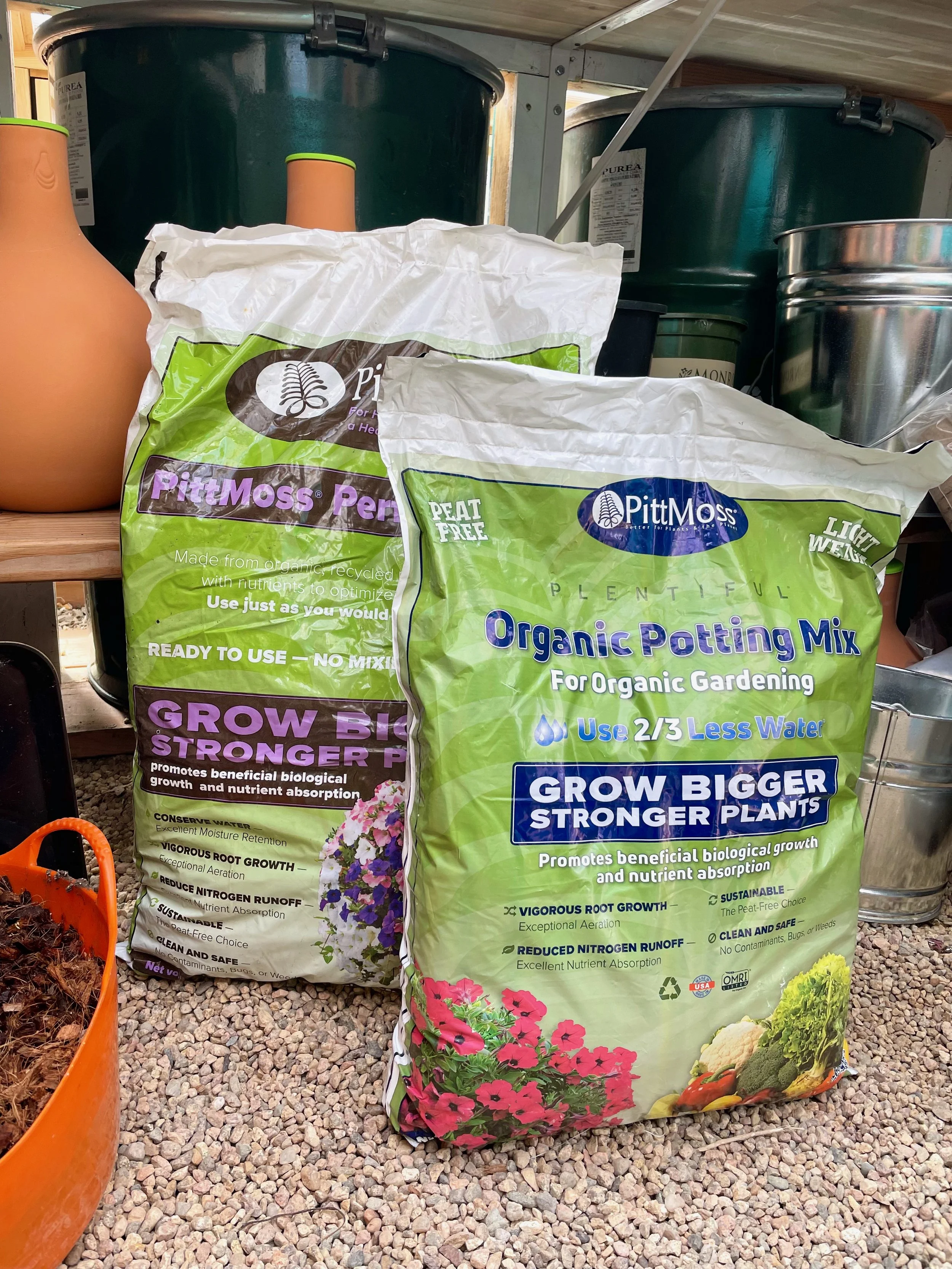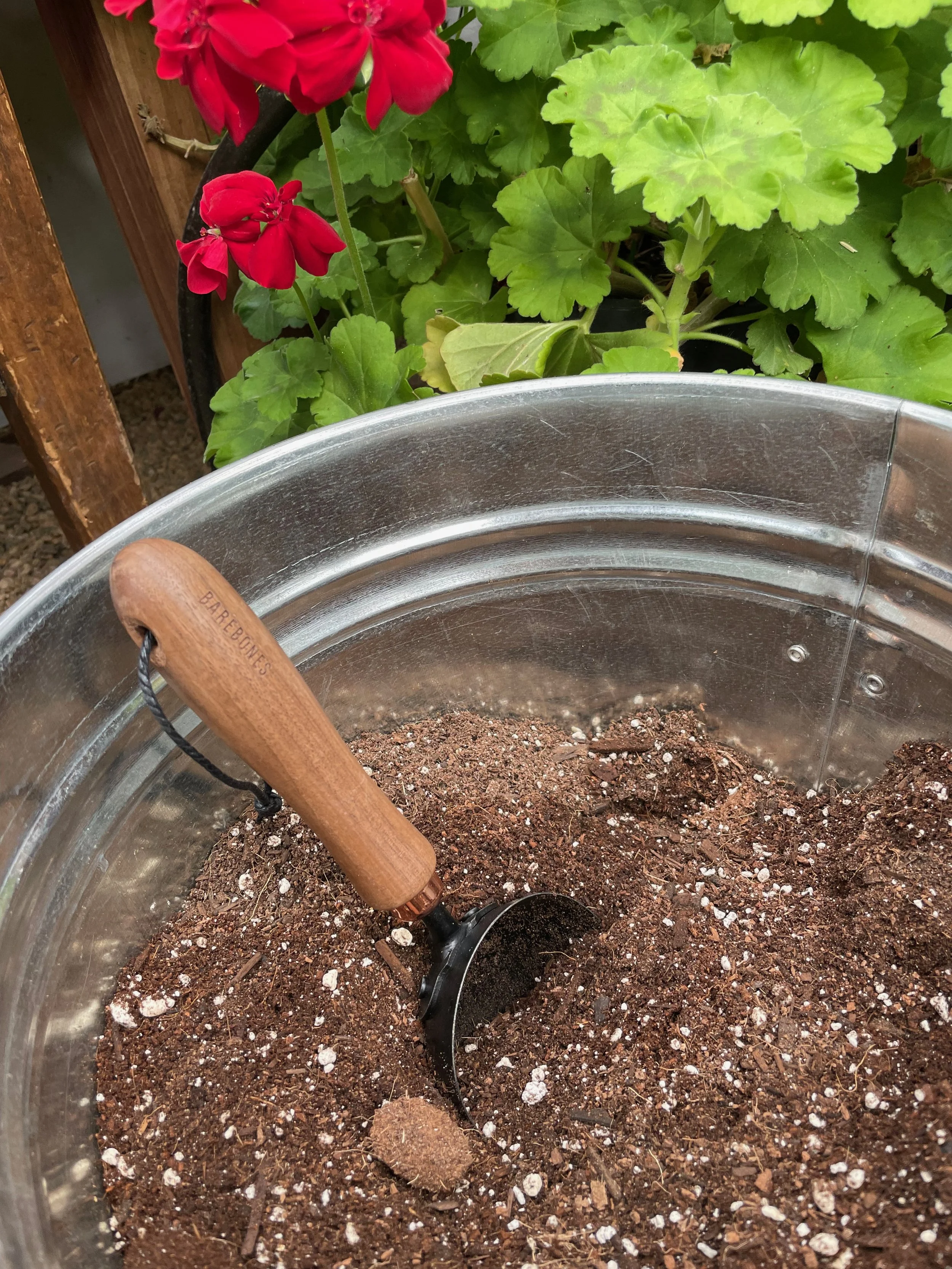Why Gardeners Should Stop Using Peat
And What You Can Use Instead
Most of the time the battle against climate change feels insurmountable. As plant people, we want to take care of the earth – whatever tiny plot we have. Whether it is a balcony in the city or a large estate, when we interact with plants we are tending to the earth and her inhabitants. We are stewards. And that action is in solidarity with the other beings who also live on the planet.
Gardening and plant-tending, I contend, are concrete and viable steps in the battle against climate change. But there is a big step that we as gardeners MUST take to be even more environmentally-responsible: we must go peat-free. Peat-free gardening – no matter the scale – is one of the biggest steps we can take as responsible gardeners. Whether you have a few houseplants or a large suburban yard, going peat-free is equally important – and actually, not very hard to do.
Here's the irony: when we use peat in our gardens, we are destroying another entire ecosystem, depleting a non-renewable resource and a HUGE carbon sink, and contributing to the release of CO2 and other greenhouse gasses – all in the service of tending our own gardens. Using peat displaces animal life, destroys watersheds, and wrecks plant habitat. And it is unnecessary; there are viable alternatives for peat which don't involve mass destruction. Gardening is caring for the earth, but we must stop using peat in our gardens.
Monty Don, horticulturist, author, and gardener — not to mention host of the BBC’s Gardener’s World — has sounded the alarm about peat, and the UK is taking action. However, the US has not heeded the cry of our friends across the pond. We, too, must act as gardeners and as activists to ban the use of peat in our country.
What is peat moss? And what is a peat bog?
Save the peat bogs! Get the peat out of your garden for good!
Let's start with the basics: peat moss or peat or sphagnum moss are all terms that are used interchangeably in the US. They all refer to the decomposed or decomposing plant matter harvested from peat bogs – largely in Canada and Russia, but also in many other places around the world. Great Britain, for example, has destroyed or damaged at least 80% of their peat bogs for the horticultural industry in the last 60 years.
Peat bogs are remarkable, complex ecosystems. They support all kinds of life from microbial organisms to mammals, birds, and insects – not to mention extraordinary plants like carniverous plants. And they are wetlands – a very unique form. The peat itself is part water filter, part sponge. And it's an incredible carbon sink holding many more tons of carbon per square meter than a forest or even a rainforest.
In a peat bog, layers of plant material have been deposited over thousands of years. In fact, peat bogs grow at a rate of just 1 millimeter per year. Bogs are damp, and the plant material is deprived of oxygen as it decomposes which makes the process very slow, and the resulting material — what we call peat — is unique.
Dried peat has been burned in homes for centuries.
Why is peat used in farming and gardening?
Peat moss is not nutritionally rich; it is not a food source for plants. It loosens a potting mix, allowing for air pockets which plant roots need. Additionally, it holds moisture. And most gardeners have only used it for about 70 years.
After WWII, the industrialized harvesting of peat began in earnest as a new industry. Peat has been harvested to be burned heating homes for at least a millennium, but never at an industrialized scale. After WWII, it became the miracle of the horticultural industry – a lightweight product that could be shipped easily. And adding peat to a planting mix made for better bedding plants to be sold in garden centers.
Some farmers also add peat to their soils as a mulching layer when tilling. In a field it does the same thing: holding more moisture and making the soil more like loam – light with plentiful air pockets for tiny root fibers.
However, there are plenty of alternatives, and it is critical that the agricultural industry as a whole changes their practices — not just home gardeners.
Why is harvesting peat bad for the environment?
Well, here's the irony: almost all peat that is harvested is utilized in the horticultural industry – in potting mixes both for wholesale growers and for consumers. We are destroying one ecosystem to artifically create another.
A carniverous plant in the peat bogs of the UK
Peat cannot be harvested without destroying an entire ecosystem. And peat bogs are beautiful, complex environments which have collected and built up over thousands of years. They can not be renewed quickly. Once the peat bog is gone, it will not be replenished for generations, if ever. Peat bogs are home to thousands of species from carniverous plants to berries like cranberries. They are also filled with insect life and amphibians including frogs and salamanders. Moose spend much of their lives eating and sheltering in bogs. And smaller mammals including beavers and otters often live in bogs as well.
Not only does the harvesting of peat destroy ecosystems, but it also releases CO2 and other greenhouse gases which have been stored in the peat bog. Peat bogs are carbon sinks – they store an enormous amount of carbon. When a peat bog is harvested, that process releases that sequestered carbon.
Additionally, peat bogs are wetlands. Some are fed by springs or streams, others retain moisture from rainfall. Destroying a peat bog interrupts this process contributing to massive changes in watersheds, flooding, and loss of local waterways which impacts local wildlife and humans as well.
That's a lot of damage done on many fronts when there are alternatives to peat which work very well. More on that below!
What can be done?
As human beings and citizens of this planet, we can do a lot, actually, to end the harvesting of peat. First and foremost, look for peat-free potting mixes when you are shopping. If your local store doesn't carry them, speak to a manager and ask them to start. Stores won't carry peat-free mixes unless we demand them – and unless we stop buying mixes made with peat.
You should also contact your elected officials asking them to outlaw the sale of peat-based products. In the UK, where 85% of their peat bogs have been harvested and destroyed since 1950, the government is outlawing the sale of peat-based products to consumers by 2024. And by 2030 the entire horticulture industry in the UK must be peat-free. This is a HUGE step! And it can be done globally, too.
How do I know if a bag of potting mix has peat in it?
Just like with food, we all have to be better at reading labels. A bag of potting mix will have a list of ingredients on it — somewhere. In the US, this isn’t standardized like it is with our foods. But there will be a list of ingredients on the bag. Look for words like: peat, peat moss, moss, and sphagnum moss — and don’t purchase those products. Most peat-free mixes will say “peat-free” somewhere on the bag, but this isn’t the standard, either. Read on for a few product recommendations.
Products in the UK must be labeled and are required to go peat-free by 2024. Hopefully those solutions and innovations will spread across the planet, but we can’t wait for a trickle-down that may never happen. We must be pro-active consumers.
What is a substitute for peat moss in the garden?
Actually, there are lots of solutions out there. Finding the right one will largely depend on your climate and what you are growing. The most common substitute for peat right now is coco coir – the shredded husks of coconuts. Now, there are lots of problems with using coco coir – a pretty big CO2 footprint due to shipping and labor practices in countries growing and harvesting coconuts are two of the biggest. But coco coir is a waste product of an established industry. It is a good substitute for peat and works very well. And it is readily available making it an easy solution.
Other solutions include: shredded paper and paper fibers, shredded bark, wool pellets, well-composted manure, pine needles, rice hulls, and leaf mold. All have their benefits and drawbacks. And some will work well in one climate and not as well in another. You may need to experiment to find what works well for you.
Generally, however, I recommend coco coir. It is readily available. It is very similar to peat. And it is least likely to send a gardener back to peat-based solutions. Is it perfect? No. But it is significantly better than peat moss.
What peat-free potting mixes do you like?
I have been peat-free as a gardener for several years, and I've used a wide range of products. There are some truly innovative solutions out there, and here are some of my favorites:
PittMoss products are labeled Peat Free. Ask for peat-free products at your local garden centers.
Near Source Organics: Near Source is new to me this year, but I was SO excited to find their products at my local Home Depot! Their products are both peat-free and locally-sourced. I used their raised bed mix in The Orchard, and I am delighted so far!
PittMoss: last year PittMoss sent me several of their peat-free mixes to try. I started dahlias in pots with PittMoss and potted up potted plants. I was very impressed. PittMoss holds a LOT of water which is wonderful in my dry climate – especially in terracotta pots. It has a very different texture, and I was doubtful, but I shouldn't have been. It is a great product – especially for potted plants. And it is made with recycled paper fibers – so not only are you peat-free, but you are also returning a recycled product back to the earth.
FoxFarm: I have used FoxFarm soils for years, too, and they have expanded their peat-free mixes in the last few years. I love their CocoLoco potting mix in particular.
Other off-the-shelf brands include: Back to the Roots and Beyond Peat.
And do some research: there are local soil companies like Paonia Soils here in Colorado that make peat-free mixes on a larger scale. Perhaps someone where you live is doing the same. This is a great opportunity to support a small business.
Where do I find peat-free potting mixes?
I live in Colorado where the marijuana-growing industry has a large presence. Pot growers have adopted peat-free practices in droves, and my local hydroponics/growing supply store has a great supply of coco coir and other peat-free products.
There are also suppliers online with reasonable shipping costs for smaller quantities if you garden largely on a potted-plant or house plant scale.
But you can also make your own peat-free potting mix using supplies that are readily available at most garden centers. And that's often the most economical choice if you need larger quantities and can't find them at your local garden center.
How do you make peat-free potting mixes?
With just a few readily-available ingredients, you can make a wonderful peat-free mix. You may need to adjust the proportions of the mix depending on your climate and what is available locally, but it can be done.
Here's are my current favorite recipes:
As always, if you have questions about peat-free gardening, just ask! And follow along on Instagram for lots more gardening content and tips for sustainable living, too.
Happy Gardening!
DIY peat-free potting mix is easy to make and is very effective.












